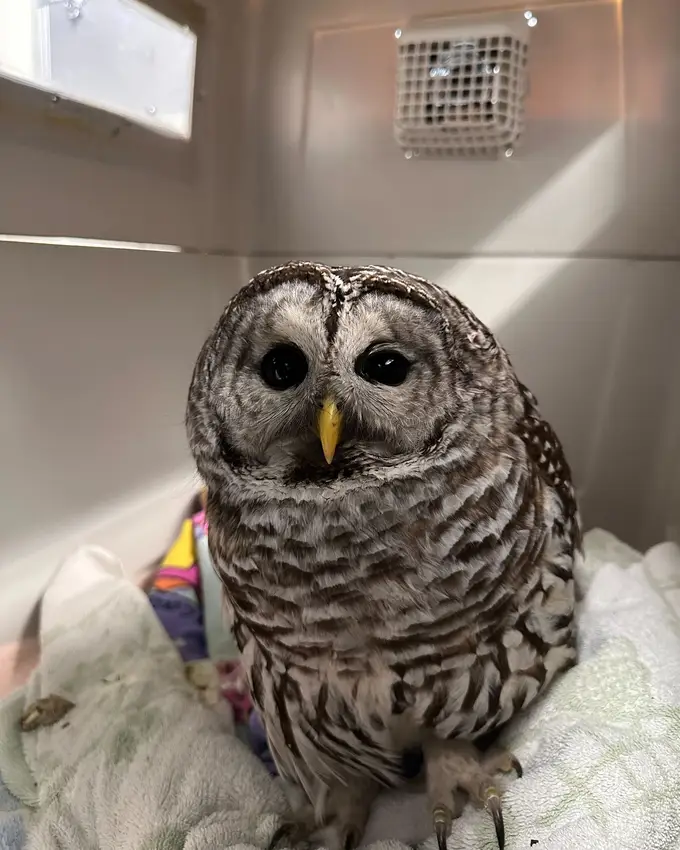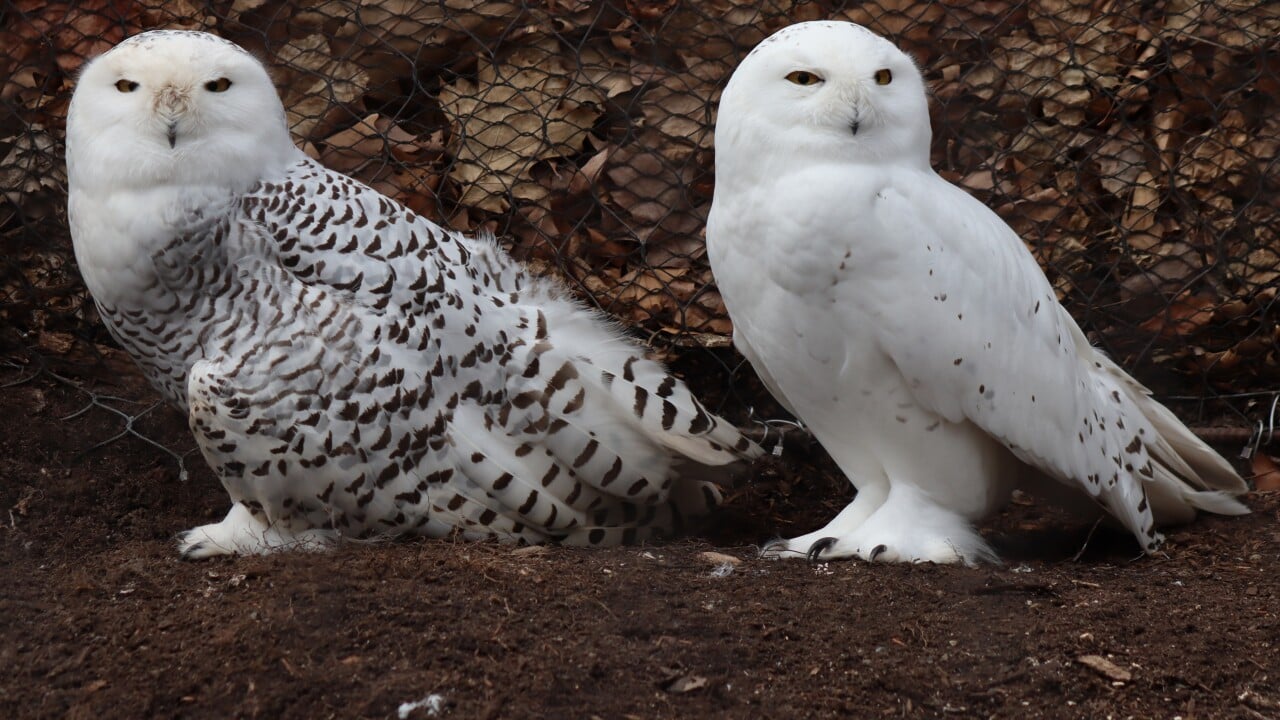From UM Raptor Center
If you can't break some records in your 50th year of operation, when can you?
On Sunday, December 8th, 2024, TRC admitted patient number 1059, officially making this year's patient census the highest in our history. Our record-breaking patient isa hatch-year barred owl experiencing severe head trauma after a suspected car strike. Our big-eyed friend is resting with pain medications and is receiving oxygen as we monitor its neurological symptoms during this critical period of early care.
With every uptick in yearly admissions comes the question: Why are you seeing more birds? The answer is the culmination of multiple factors.
Our education ambassadors have inspired more than 1,000,000 members of the public over 50 years resulting in more calls reporting raptors in need each year.
TRC has a growing network of transport volunteers who provide a raptor "ambulance" service, escorting birds from across Minnesota and from a few surrounding states to the Center's hospital.
There might simply be more injured raptors in general. With a host of collaborators, we have saved raptor species and supported population growth. While the rate of injury might technically be similar, increased populations could mean an equal increase in injuries.
Another growing population is playing a role in the steady increase of bird admissions: people. TRC regularly admits patients injured due to car strikes, window collisions, and entrapment in objects such as chimneys and sports netting; others are admitted following poisoning with lead or rodenticides. The list of ways people impact the health of raptors and our shared environment is extensive.
As biodiversity is threatened, there are consequences such as the emergence of new disease threats. These cause temporary influxes in patient admissions and contribute to a consistent upward trend over time.
There is a lot of work to do, but when reflecting on all that TRC has collectively achieved in its first 50 years of serving raptors, it's clear the next 50 can tip the scale in shifting the human impact on the environment from negative to positive and leave a better world for generations of both people and raptors to come.

